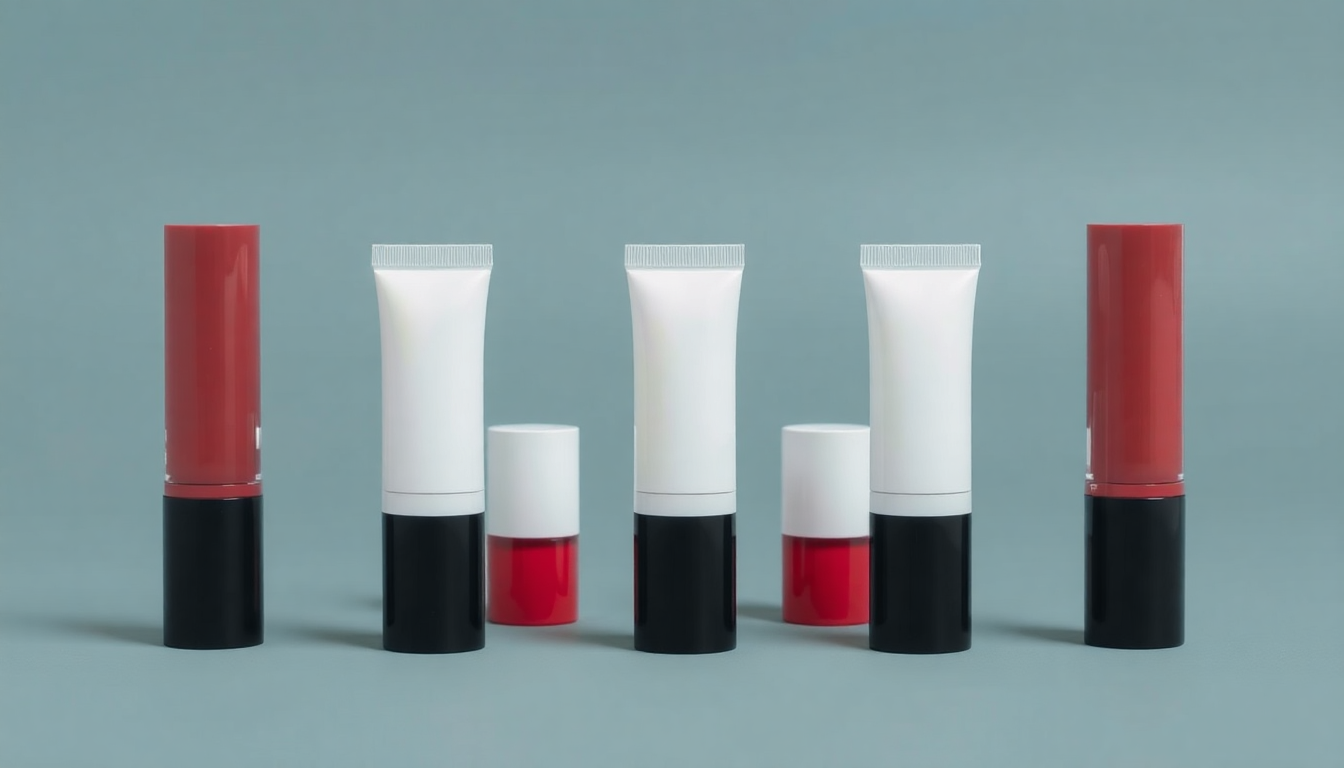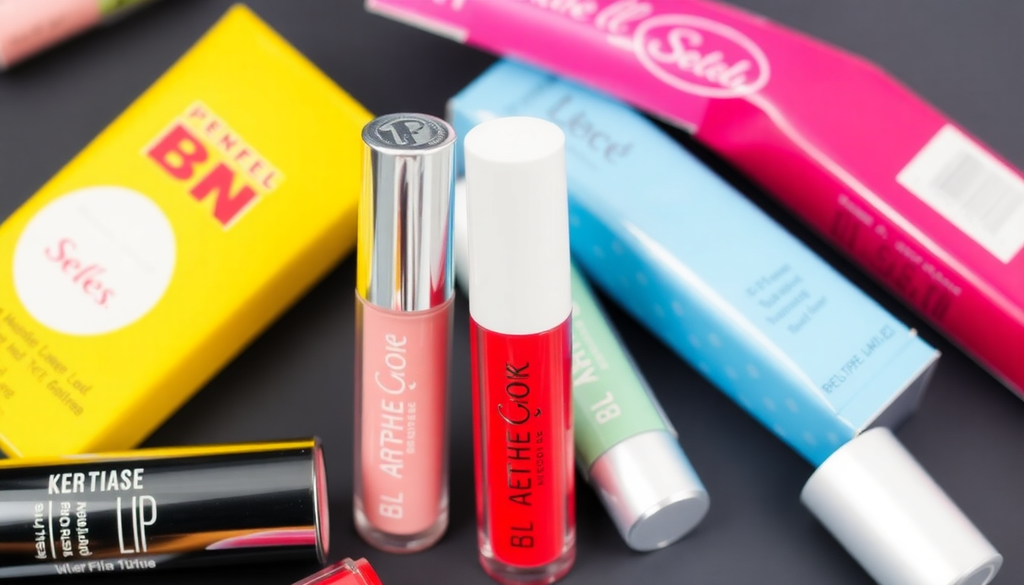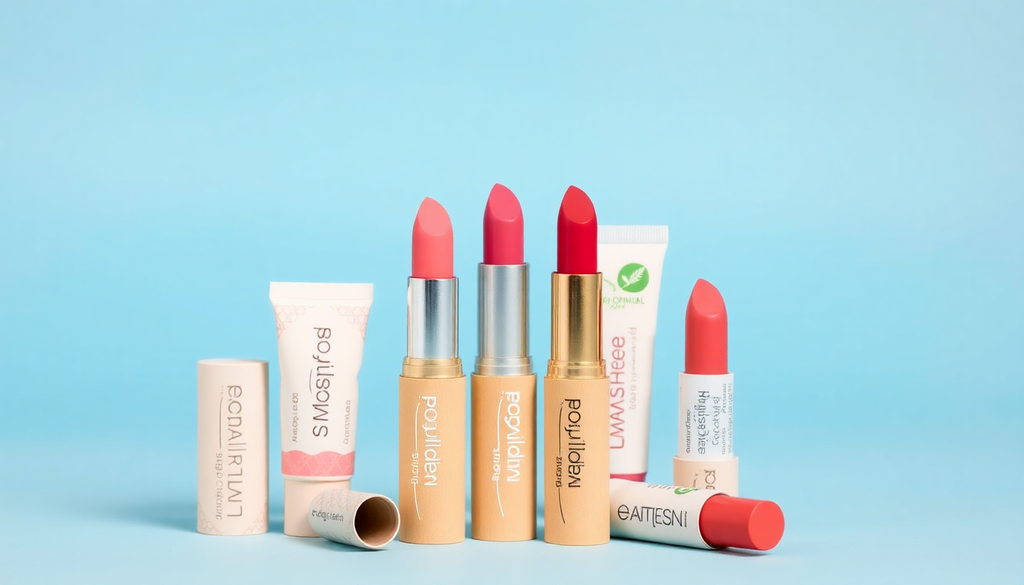
Capsule Shade Strategy for Private‑Label Lip Stains: Launch a Vegan 5‑Shade Collection with Low MOQs & Real Unit Costs
Capsule Shade Strategy for Private‑Label Lip Stains: Launch a Vegan 5‑Shade Collection with Low MOQs & Real Unit Costs
Why Lip Stains Are a Smart Launch Product (2024–2025 Market Context)
Lip stains sit at the sweet spot between long‑wear performance and low formulation complexity — perfect for founders launching a private label lip product with constrained budgets. Industry observers note renewed consumer interest in wearable lip color as routines simplify post-pandemic, and demand for vegan lip product claims remains strong among younger shoppers.
Verified industry signals to consider as you plan:
- Color cosmetics reported pockets of renewed growth in 2023–2024 with lip categories often leading the comeback in many markets (industry reporting from market research firms).
- Search interest and consumer preference for "vegan" and "clean" beauty continued to climb into 2024, indicating that vegan lip product claims improve conversion for digital-first brands (see public trend analyses and Google Trends data).
- Retailers and indie brands are favoring capsule, multi-use collections (smaller shade sets with strong repeat purchases) to reduce inventory risk and drive faster reorder cycles.
These broad signals make a 5‑shade vegan capsule an efficient way to validate product-market fit while keeping MOQ and working capital manageable.
Step 1: Formula Foundations — Practical Guidance for Beginners
Start with a simple, robust stain base that emphasizes transfer resistance, hydration, and a lightweight feel. Choose an initial formula that is easy to reproduce across shades to reduce color-dependent stability issues.
- Typical stain base components: film former (for wear), humectant (glycerin or propanediol), lightweight emollient (caprylic/capric triglycerides or isoamyl laurate), preservative system, and pigment dispersion.
- Pigments: iron oxides (CI 77491/92/93) and selected CI lakes for stronger reds — avoid carmine to keep the line vegan.
- Optional sensorial boosters: light silicones for glide or small amounts of peptides/botanicals for marketing, used sparingly to control cost.
Formulation checklist (actionable)
- Request full INCI lists and supplier declarations for every raw material.
- Ask the lab for pigment dispersion protocols and recommended pigment loads per shade.
- Require stability testing at 1, 3 and 6 months at multiple temperatures; include lightfastness for reds and berries.
- Confirm preservative efficacy test (PST) or challenge test results for water‑containing bases.
- Never skip stability testing!
Step 2: Packaging That Balances Cost & Perceived Value
Packaging decisions drive both pricing and MOQ. For lip stains, the two most common formats are doe-foot tube (like gloss) and small squeeze tubes. Your choice determines component costs, fill technology, and finished look.
- Budget option: standard polyethylene tube with doe-foot applicator — component cost roughly $0.25–$0.60/unit at MOQ 500. Simple, functional, fast lead times.
- Mid-range: frosted PET tube or soft touch cap with a slightly upgraded applicator — $0.60–$1.40/unit at MOQ 500. Higher perceived value for DTC customers.
- Sustainable option: PCR plastic, sugarcane bioplastic, or refillable shells — generally +$0.20–$0.80/unit and sometimes higher MOQs (1,000+).
Packaging checklist (actionable)
- Confirm fill volume vs. claimed volume (e.g., 8 mL declared, 7.5 mL typical fill).
- Request component certification for PCR or bio‑resin claims.
- Ask for fill tolerance data and expected yield loss in pilot runs.
- Build art & labeling lead time into the schedule (printing often adds 2–4 weeks).
Step 3: Capsule Color Strategy — Build a 5‑Shade Suite That Sells
Think of shade selection the way you'd build a capsule wardrobe: a base of neutrals plus versatile pops that work across seasons and skin tones. That approach reduces SKUs while increasing cross‑sell and reorder potential.
- Shade 1 — Everyday Warm Nude: a neutral base that appeals broadly and suits office/lifestyle looks.
- Shade 2 — Muted Rose: universally flattering and excellent for daily wear and gifting.
- Shade 3 — Brick Red: elevated enough for polished looks, high sell-through in many markets.
- Shade 4 — Deep Berry: captures fall/winter demand and adds evening versatility.
- Shade 5 — Sheer Tinted Blush/Topper: universal tint for layering or customers who prefer minimal makeup.
Pantone starting points to provide your colorist: PANTONE 13-1520 (soft rose), PANTONE 16-1511 (warm nude), PANTONE 18-1658 (brick red), PANTONE 19-2311 (berry). Use these as directional references — expect pigment load and substrate to shift final appearance.
Color selection checklist (actionable)
- Order swatches on paper and on lips across at least 5 skin tones.
- Request lab swipe sets (not just printed color cards) to check staining behavior and finish.
- Check staining intensity at 1 minute, 10 minutes and after rubbing to assess transfer and longevity.
Step 4: Real Unit Costs & MOQ Scenarios — What to Expect
Transparent costs are essential. Below are sample estimated cost ranges for a vegan lip stain at different MOQs. These are illustrative — get a firm quote from your contract manufacturer.
- Development & formula sampling (one time): $300–$1,500 depending on revisions and complexity.
- Packaging component costs (per unit):
- Basic tube + applicator: $0.25–$0.60
- Mid-tier tube + upgraded cap: $0.60–$1.40
- Sustainable component premium: +$0.20–$0.80
- Manufacturing (fill, QA, labeling): $0.25–$0.80/unit
- Artwork, proofs and tooling amortized across the run: $0.05–$0.50/unit depending on order size
- Estimated landed cost per unit at MOQ 500: roughly $1.05–$3.90 (exclude freight and duties)
- At MOQ 1,000 the per unit cost often drops 10–25% due to component price breaks and lower artwork amortization.
Hidden cost alerts: independent third‑party certification (vegan, cruelty free), color correction fees, unexpected rework fees for out of spec fills, and shipping/duties if manufacturing overseas. Always ask for a fully itemized quote and sample invoice.
Supply Chain & Lead Time — Plan Backwards From Launch Date
A realistic timeline from concept to shipped inventory typically looks like this for a first time private label lip stains launch:
- Weeks 1–2: Concept, shade direction and initial brief to manufacturer.
- Weeks 3–5: Lab swatches and color revisions (expect 2–3 cycles).
- Weeks 6–10: Stability testing and preservative checks (short pilot data may be available earlier).
- Weeks 8–12: Packaging sourcing and production lead time for components.
- Weeks 10–14: Pilot fill (50–200 units) and QA; artwork sign off.
- Weeks 14–20: Full production run and final QC; shipping and customs clearance will add additional time depending on origin.
Tip: build a 4–8 week buffer for component delays, especially if using sustainable or custom packaging.
Manufacturer's Corner — Questions That Separate Pros From Pretenders
When vetting manufacturers, you want transparency on processes, certifications and flexibility with MOQs.
Manufacturer checklist (5 essential questions)
- What is your minimum MOQ for custom pigmented lip stains versus stock shades?
- Can you provide COAs (Certificate of Analysis) and vegan/cruelty free declarations for raw materials?
- What is your sample policy — do you include lab swatches and pilot fills in the quoted cost?
- How do you manage color variation across batches and what is your tolerance policy?
- Can you support label compliance (EU, US, UK INCI, batch coding) and provide batch records post‑production?
Red flags: evasive answers on raw material origin, refusal to run small pilot batches, or inability to produce batch records and QA data. A trustworthy manufacturer will show data and timelines, and offer options for small MOQs or staggered production.
Pricing Strategy & Go‑To‑Market Tips
To price for profit, start with landed unit cost and apply a margin that suits your channel. Example DTC strategy: cost × 3 is a common starting point for a prestige indie brand, while cost × 2–2.5 may fit mass or subscription channels.
- Bundle strategy: offer the 5‑shade capsule at a slight discount vs. single shade price to increase AOV.
- Intro offer: limited quantity first run (e.g., 500 sets) creates scarcity and generates fast feedback.
- Sampling: include small sample cards or mini sachets to encourage trial — cost these carefully into promotion spend.
Three Actionable Checklists to Run Your Project
Pre-production checklist
- Finalize 5 shade directions and confirm Pantone references.
- Choose base formula and confirm vegan raw material declarations.
- Get packaging quotes for at least two suppliers (budget & sustainable options).
- Agree on a pilot batch size (50–200 units) and price.
Pilot approval checklist
- Test pilot across 5 skin tones and under different lighting (indoor, outdoor).
- Run stamping/filling check and confirm labeling adhesion.
- Confirm product stability after 1 week accelerated test and 1 month ambient.
Pre‑launch logistics checklist
- Lock in full production timeline and shipping window.
- Confirm customs documentation if importing/exporting.
- Prepare product pages, imagery and shelf copy; test buy flow on checkout.
Final Notes & Next Steps
Launching a private label lip stains capsule is an achievable, scalable strategy if you keep formulation simple, choose five complementary shades, and partner with a manufacturer who supports low MOQs and transparent costing. Your main levers are packaging choice, pigment strategy and launch cadence — control those and you control margin and risk.
If you want hands‑on help with formulation decisions, cost modeling, or sourcing low‑MOQ vegan packaging, request our Lip Stain Starter Kit at [CONTACT PAGE].
Key takeaway: Start lean with a well-curated 5‑shade capsule, demand clear unit economics from suppliers, and insist on pilot fills and documented stability. With disciplined planning and the right manufacturing partner, your vegan private label lip stains can launch quickly and profitably.


